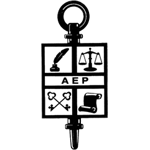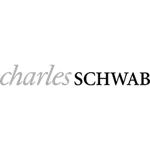When most people think about retirement planning, they focus on investment accounts, Social Security, or pension benefits. But there’s another powerful—and often overlooked—tool that can play a vital role in long-term financial security: the Health Savings Account (HSA).
With recent legislative changes expanding contribution limits and eligible uses, HSAs have become even more relevant. For individuals planning for retirement, especially those concerned about rising healthcare costs, an HSA offers a unique blend of tax advantages and financial flexibility.
What Is a Health Savings Account?
An HSA is a tax-advantaged savings account designed to help individuals with high-deductible health plans (HDHPs) pay for qualified medical expenses. What makes HSAs exceptional is their triple tax benefit:
- Contributions are tax-deductible.
- Earnings grow tax-free.
- Withdrawals are tax-free when used for qualified healthcare expenses.
This combination is unmatched by other retirement accounts, making the HSA an essential tool for long-term planning—not just for short-term medical costs.
HSAs as a Long-Term Retirement Strategy
Many people use HSAs to cover current medical expenses, but this approach often misses their full potential. By treating your HSA as a retirement account and avoiding withdrawals in the short term, you allow the account to grow over time through compounding.
In retirement, when healthcare costs tend to rise sharply, your HSA can become a dedicated fund to cover those expenses—without triggering additional taxes or penalties.
Recent Legislative Enhancements
Recent policy changes have expanded the flexibility and power of HSAs. These include:
- Increased contribution limits, allowing individuals and families to save more each year.
- Broader definitions of “qualified medical expenses,” including some over-the-counter items, telehealth services, and potentially even insurance premiums under certain conditions.
- Temporary policy changes due to COVID-19 that may influence how and when funds can be used, though many of these are evolving.
Staying current on these updates can ensure you're making the most of what the law now allows.
How HSAs Compare to Other Retirement Accounts
Unlike a 401(k) or IRA, an HSA doesn’t require minimum distributions at age 73. Funds can remain untouched indefinitely, offering greater flexibility in retirement income planning.
Additionally, while traditional retirement account withdrawals are taxable (unless from a Roth), HSA distributions for medical expenses are completely tax-free—making them one of the most efficient ways to fund healthcare in retirement.
Even if you eventually use HSA funds for non-medical expenses after age 65, you’ll simply pay ordinary income tax—similar to a traditional IRA—with no penalty. This adds another layer of versatility.
Strategic Uses for HSA Funds in Retirement
Healthcare costs are among the largest and most unpredictable expenses in retirement. Fidelity estimates that a 65-year-old couple retiring today will need over $300,000 for healthcare throughout retirement. HSAs can help cover:
- Medicare premiums (excluding Medigap)
- Long-term care services
- Prescription drugs
- Dental and vision care
- Out-of-pocket hospital costs and deductibles
By earmarking your HSA for these future expenses, you reduce the pressure on other retirement accounts—and help preserve assets for other goals, including legacy planning.
Investment Opportunities Within Your HSA
Many HSA providers now offer investment options similar to a 401(k) or IRA. Once your balance exceeds a certain threshold (often $1,000 or $2,000), you may be able to invest in mutual funds or ETFs.
Investing your HSA funds—rather than letting them sit in cash—can help grow your balance over decades. Just be sure to understand your provider’s fees, fund choices, and minimum balance requirements.
Contribution Limits and Eligibility
To contribute to an HSA, you must be enrolled in a high-deductible health plan. For 2025, the IRS allows:
- Up to $4,300 in individual contributions
- Up to $8,550 for family coverage
- An additional $1,000 catch-up contribution for those age 55 or older
These limits are indexed annually for inflation, and recent legislative proposals aim to raise them further.
If you’re no longer eligible to contribute—perhaps due to enrolling in Medicare—you can still use your existing HSA funds for qualified expenses. It’s wise to plan accordingly in the years leading up to retirement to maximize contributions while you can.
Integrating HSAs Into Your Broader Financial Plan
Like any financial tool, an HSA works best when integrated into a comprehensive retirement strategy. At MJT & Associates, we help clients evaluate how HSAs fit alongside other savings vehicles, how to time withdrawals, and how to align investment choices with long-term goals.
For entrepreneurs, divorcees, and those nearing retirement, HSAs offer flexibility, tax advantages, and long-term value—especially when used strategically.
Final Thoughts
Health Savings Accounts are more than just a way to pay for medical bills—they’re a critical component of modern retirement planning. Their unique tax structure and growing versatility make them one of the most efficient vehicles for protecting your retirement income from the rising cost of healthcare.
If you’re serious about building a resilient retirement plan, your HSA deserves a central place in the conversation.











